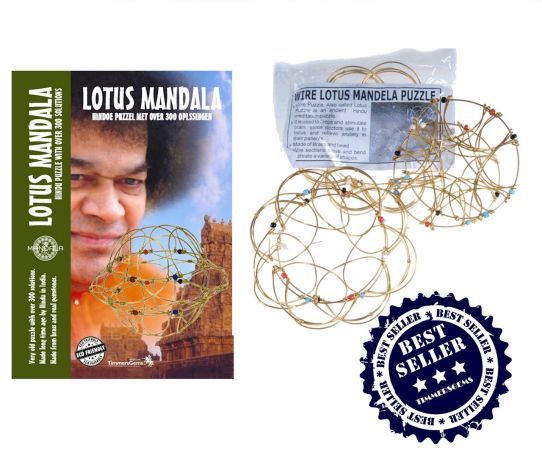We use cookies to make your experience better.
Mandala or Lotus puzzle
- Buy 50 for €3.50 each and save 12%
Beautiful puzzle with as basis the mandala.
The Mandala (Sanskrit for circle मण्डल) is a generic term used in Tibetan art and Tibetan Buddhism for a plan, map or geometric pattern that the cosmos metaphysically or symbolically depicts. The concept has a Hindu origin, but is also widely used in Tibetan Buddhism. A special form is the sand mandala, surrounded by ritual ceremonies, weeks into painstaking detail is manufactured with small grains of sand, and then the later ceremonially destroyed and returned to nature (water). The psychiatrist Carl Gustav Jung saw the mandala as a representation of the unconscious self. The style of the deities followed in the first line of the Gupta period of Indian and Hindu art. Mandalas serve as meditation object which the practitioner must support focusing on the respective motive and thereby expressed learning content. The oldest mandala (MV) belonging to Buddhism are found in the Mogao Caves in Dunhuang, Western China, and Japan. They are painted on both sites rolled side (scrolls) and date from around the 9th century. (in Klim Berg-Salter, 1982, p. 115). The oldest mandala belonging to the Himalayan Buddhism are found in Dukhang gompa in Ladakh. They date from the construction of the gompa which took place between the years 1175 and 1200 AD. Ladakh today belongs to India, but was once alternately independent or belonging to Tibet. Buddhism in this region is still up in the 21st century, the Tibetan form of expression. In the gompa Dukhang found his murals that depict the "nine mandala" Buddha Vairocana, Buddha or Bodhisattva Manjushri, and Prajnaparamita. Prajnaparamita, Perfection of Wisdom, in its oldest form one of the first Mahayana Buddhist scriptures; it was later given to a human form. In the Hindu Rig-Veda, the term mandalas used for structured knowledge that can be recited. Each of the 10 books is a mandala. For example, the ninth is called the Soma mandala. This conception of mandala in abstract form was taken over by Buddhism in certain architectural form. In the Ellora caves in central India, which between the years 700 and 730 were set up, each of the three floors in cave 12 are arranged like so many mandala, with a Buddha the central part portrays, and bodhisattvas on in the cardinal directions inserted. Architectural form which is found in later centuries in gompa in the western parts of the Himalayas, as in Tabo 'Dukhang' which was built in 996 AD.
De mandala puzzle.












